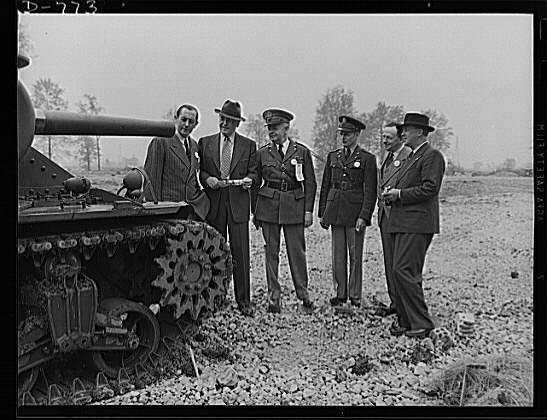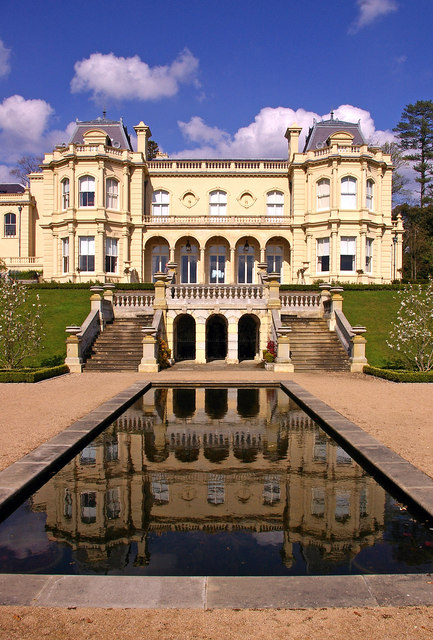|
Combined Raw Materials Board
The Combined Raw Materials Board was a temporary World War II government agency that allocated the combined economic resources of the United States and Britain. It was set up by President Franklin D. Roosevelt and Prime Minister Winston Churchill on January 26, 1942. Later Canada participated as an associated member in many of the Board's decisions. Rosen finds that the Board concentrated on difficult but non-controversial commodity problems. As the war ended its commodity committees were enlarged to include representatives of other nations. The Board closed down at the end of December 1945. Mission Roosevelt and Churchill set the Board's mission as: :a. Be composed of a representative of the British Government and a representative of the U.S. Government. The British member will represent and act under the instruction of the Minister of Supply. :b. Plan the best and speediest development, expansion and use of the raw material resources under the jurisdiction or control of the two ... [...More Info...] [...Related Items...] OR: [Wikipedia] [Google] [Baidu] |
Franklin D
Franklin may refer to: People * Franklin (given name) * Franklin (surname) * Franklin (class), a member of a historical English social class Places Australia * Franklin, Tasmania, a township * Division of Franklin, federal electoral division in Tasmania * Division of Franklin (state), state electoral division in Tasmania * Franklin, Australian Capital Territory, a suburb in the Canberra district of Gungahlin * Franklin River, river of Tasmania * Franklin Sound, waterway of Tasmania Canada * District of Franklin, a former district of the Northwest Territories * Franklin, Quebec, a municipality in the Montérégie region * Rural Municipality of Franklin, Manitoba * Franklin, Manitoba, an unincorporated community in the Rural Municipality of Rosedale, Manitoba * Franklin Glacier Complex, a volcano in southwestern British Columbia * Franklin Range, a mountain range on Vancouver Island, British Columbia * Franklin River (Vancouver Island), British Columbia * Franklin Strai ... [...More Info...] [...Related Items...] OR: [Wikipedia] [Google] [Baidu] |
Winston Churchill
Sir Winston Leonard Spencer Churchill (30 November 187424 January 1965) was a British statesman, soldier, and writer who served as Prime Minister of the United Kingdom twice, from 1940 to 1945 Winston Churchill in the Second World War, during the Second World War, and again from 1951 to 1955. Apart from two years between 1922 and 1924, he was a Member of Parliament (United Kingdom), Member of Parliament (MP) from 1900 to 1964 and represented a total of five UK Parliament constituency, constituencies. Ideologically an Economic liberalism, economic liberal and British Empire, imperialist, he was for most of his career a member of the Conservative Party (UK), Conservative Party, which he led from 1940 to 1955. He was a member of the Liberal Party (UK), Liberal Party from 1904 to 1924. Of mixed English and American parentage, Churchill was born in Oxfordshire to Spencer family, a wealthy, aristocratic family. He joined the British Army in 1895 and saw action in British Raj, Br ... [...More Info...] [...Related Items...] OR: [Wikipedia] [Google] [Baidu] |
Clive Baillieu, 1st Baron Baillieu
Clive Latham Baillieu, 1st Baron Baillieu, KBE, CMG (24 September 1889 – 18 June 1967) was an Australian-British businessman, public servant, and rower. Biography Baillieu was born in Melbourne, the son of William Baillieu, an Australian politician and financial expert, and his wife Bertha Martha (née Latham). The Baillieu family was of Belgian descent but had earlier lived in England. Baillieu was educated at Camberwell Grammar and Melbourne Grammar, and then Trinity College, Melbourne University. He subsequently moved to England where he studied at Magdalen College, Oxford. Baillieu rowed at Oxford and in 1911 was a member of the winning Magdalen College crew in the Grand Challenge Cup at Henley Royal Regatta. In 1913 he was a member of the Oxford crew in the Boat Race. In 1914 Baillieu was called to the Bar at Inner Temple. He then served in the First World War, where he was mentioned in despatches and achieved the rank of Major in the Australian Imperial Forces and temp ... [...More Info...] [...Related Items...] OR: [Wikipedia] [Google] [Baidu] |
Max Aitken, Lord Beaverbrook
William Maxwell Aitken, 1st Baron Beaverbrook (25 May 1879 – 9 June 1964), generally known as Lord Beaverbrook, was a Canadian-British newspaper publisher and backstage politician who was an influential figure in British media and politics of the first half of the 20th century. His base of power was the largest circulation newspaper in the world, the '' Daily Express'', which appealed to the conservative working class with intensely patriotic news and editorials. During the Second World War, he played a major role in mobilising industrial resources as Winston Churchill's Minister of Aircraft Production. The young Max Aitken had a gift for making money and was a millionaire by 30. His business ambitions quickly exceeded opportunities in Canada and he moved to Britain. There he befriended Bonar Law and with his support won a seat in the House of Commons at the December 1910 United Kingdom general election. A knighthood followed shortly after. During the First World War he ran ... [...More Info...] [...Related Items...] OR: [Wikipedia] [Google] [Baidu] |
Combined Food Board
The Combined Food Board was a temporary World War II government agency that allocated the combined economic resources of the United States and the United Kingdom. It was set up by President Franklin D. Roosevelt and Prime Minister Winston Churchill on June 9, 1942. Canada, after insisting on its economic importance, was given a place on the board in November, 1942. At first the Board was a pawn in a battle between the U.S. Department of Agriculture and the U.S. War Food Administration. After that was resolved, the Board ran smoothly, and effectiveness increased. Its major achievement was the multi-nation commodity committees that it set up in 1945, which became the International Emergency Food Council. It tried to organize responses to a massive shortage of food in war-torn areas. It closed in 1946. Mission The mission of the Combined Food Board set out by Roosevelt and Churchill was twofold: Operations William Mabane, the Parliamentary Secretary to the Minister of Food, expl ... [...More Info...] [...Related Items...] OR: [Wikipedia] [Google] [Baidu] |
Combined Production And Resources Board
The Combined Production and Resources Board was a temporary World War II government agency that allocated the combined economic resources of the United States and Britain. It was set up by President Franklin D. Roosevelt and Prime Minister Winston Churchill on June 9, 1942. Canada, after insisting on its economic importance, was given a place on the board in November, 1942. The Board closed down at the end of December 1945. Mission The mission of the Board set out by Roosevelt and Churchill was twofold: * a) Combine the production programmes of the U.S. and the U.K. into a single integrated programme, adjusted to the strategic requirements of the war, as indicated to the Board by the Combined Chiefs of Staff, and to all relevant production factors. In this connection the Board shall take account of the need for maximum utilisation of the productive resources available to the United States, the British Commonwealth, and the United Nations, the need to reduce demands on shipping to ... [...More Info...] [...Related Items...] OR: [Wikipedia] [Google] [Baidu] |
Military Production During World War II
Military production during World War II was the arms, ammunition, personnel and financing which were produced or mobilized by the belligerents of the war from the occupation of Austria in early 1938 to the surrender and occupation of Japan in late 1945. The mobilization of funds, people, natural resources and material for the production and supply of military equipment and military forces during World War II was a critical component of the war effort. During the conflict, the Allies outpaced the Axis powers in most production categories. Access to the funding and industrial resources necessary to sustain the war effort was linked to their respective economic and political alliances. Historical context During the 1930s, political forces in Germany increased their financial investment in the military to develop the armed forces required to support near and long-term political and territorial goals. Germany's economic, scientific, research, and industrial capabilities were one of ... [...More Info...] [...Related Items...] OR: [Wikipedia] [Google] [Baidu] |
United Kingdom–United States Relations
Relations between the United Kingdom and the United States have ranged from close allies to military opponents since the latter declared independence from the former in the late 18th century. The Thirteen British Colonies that seceded from the Kingdom of Great Britain in 1776 fought a subsequent revolutionary war and a theatre of the Napoleonic Wars in 1812. During the World Wars the United States had surpassed the United Kingdom as the world's leading power, having overshadowed it economically from the late 19th century. Since 1940 the countries have been close military allies enjoying the Special Relationship built as wartime allies and NATO partners. They are bound together by shared history, an overlap in religion, common language, legal system and kinship ties that reach back hundreds of years, including kindred, ancestral lines among English Americans, Scottish Americans, Welsh Americans, Cornish Americans, Scotch-Irish Americans, Irish Americans, and American Britons. Tod ... [...More Info...] [...Related Items...] OR: [Wikipedia] [Google] [Baidu] |




.jpg)